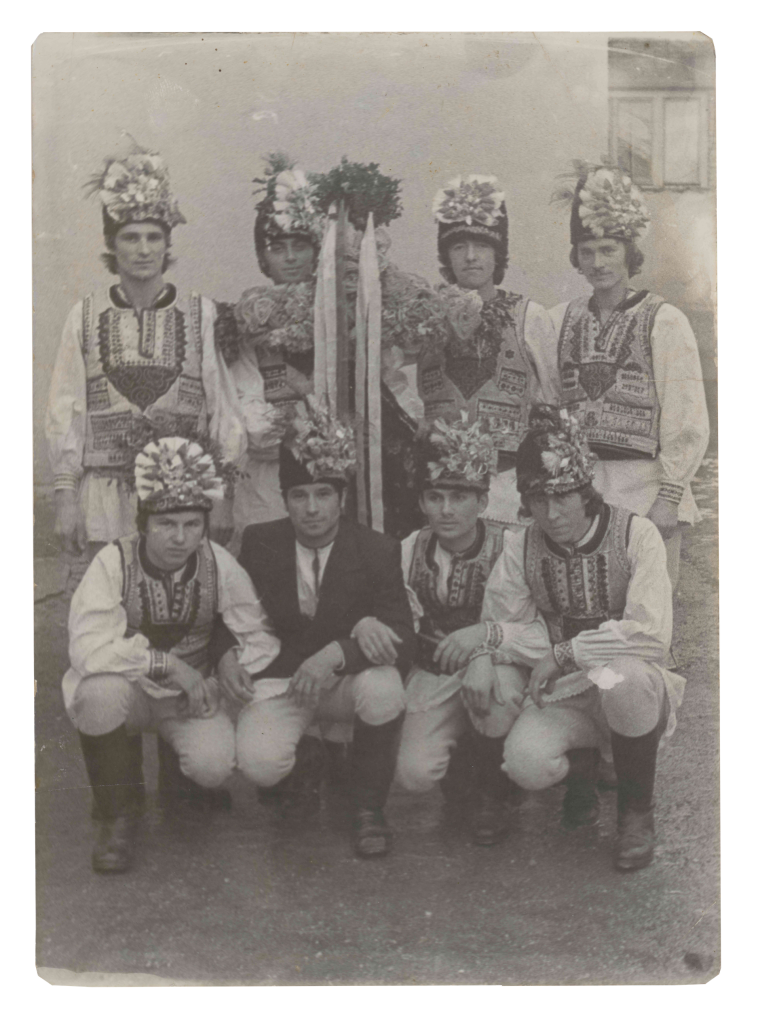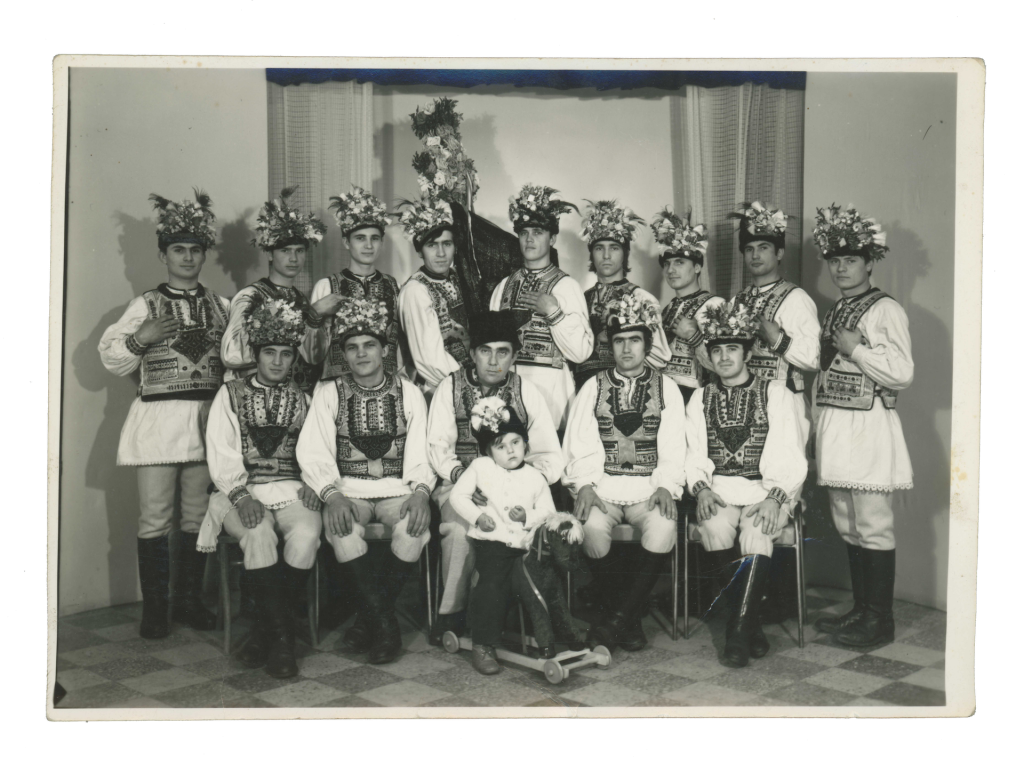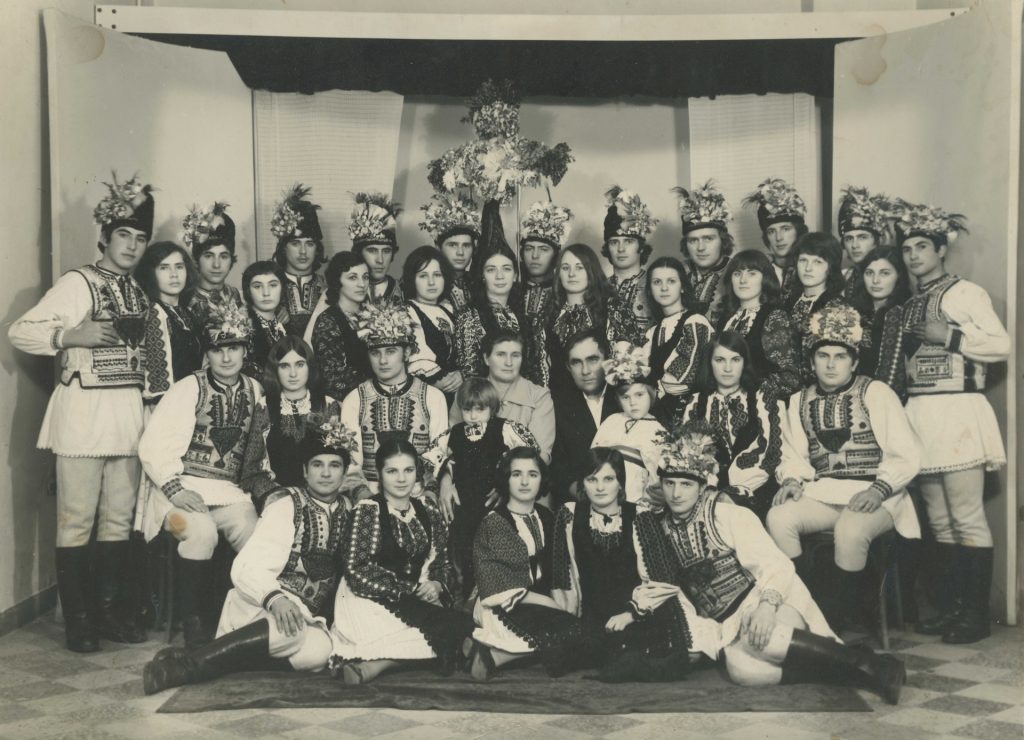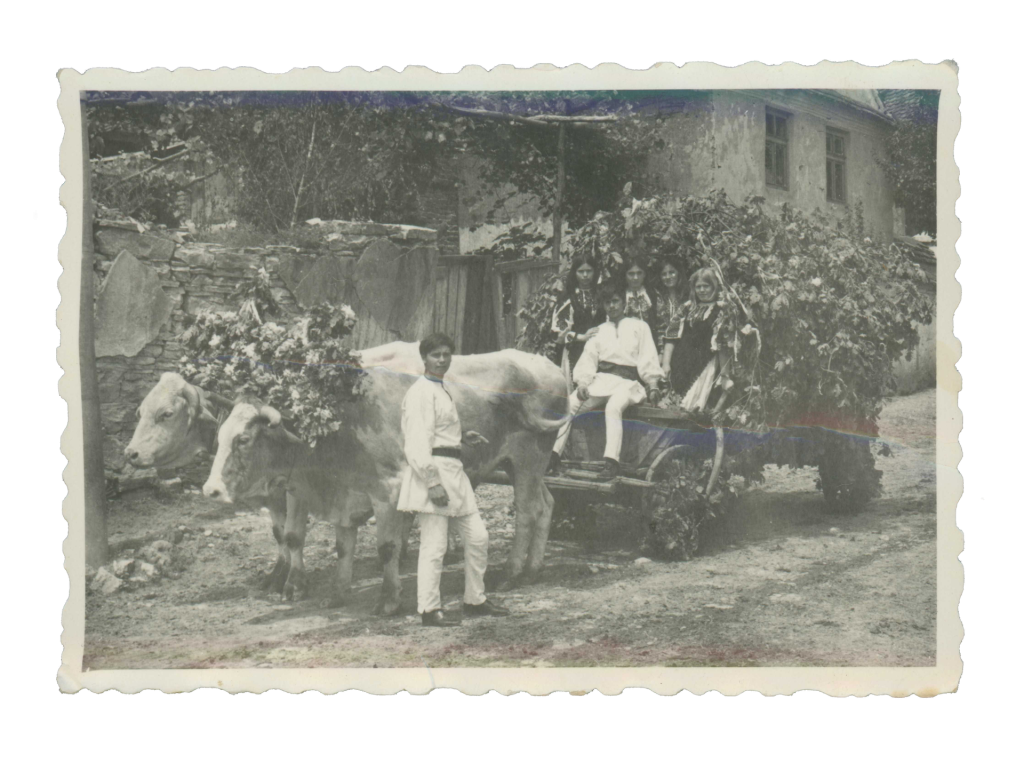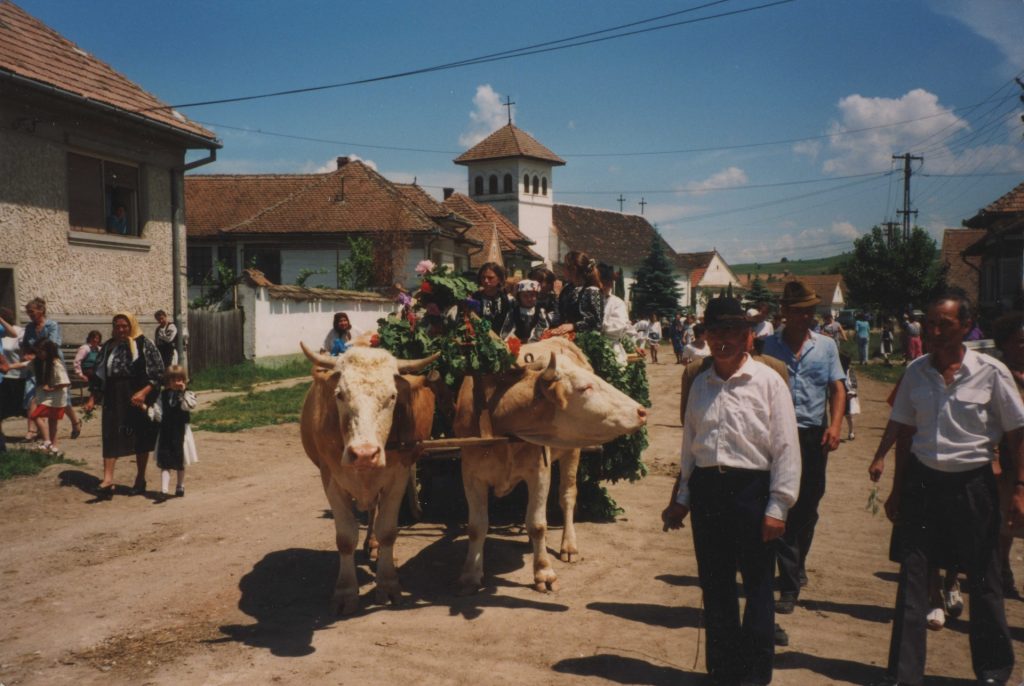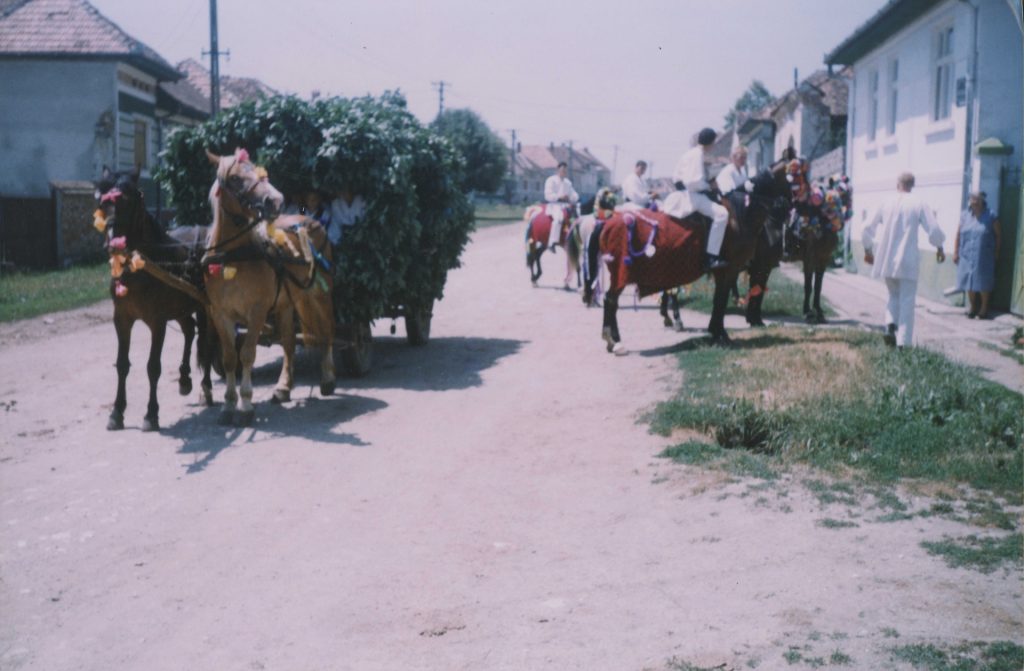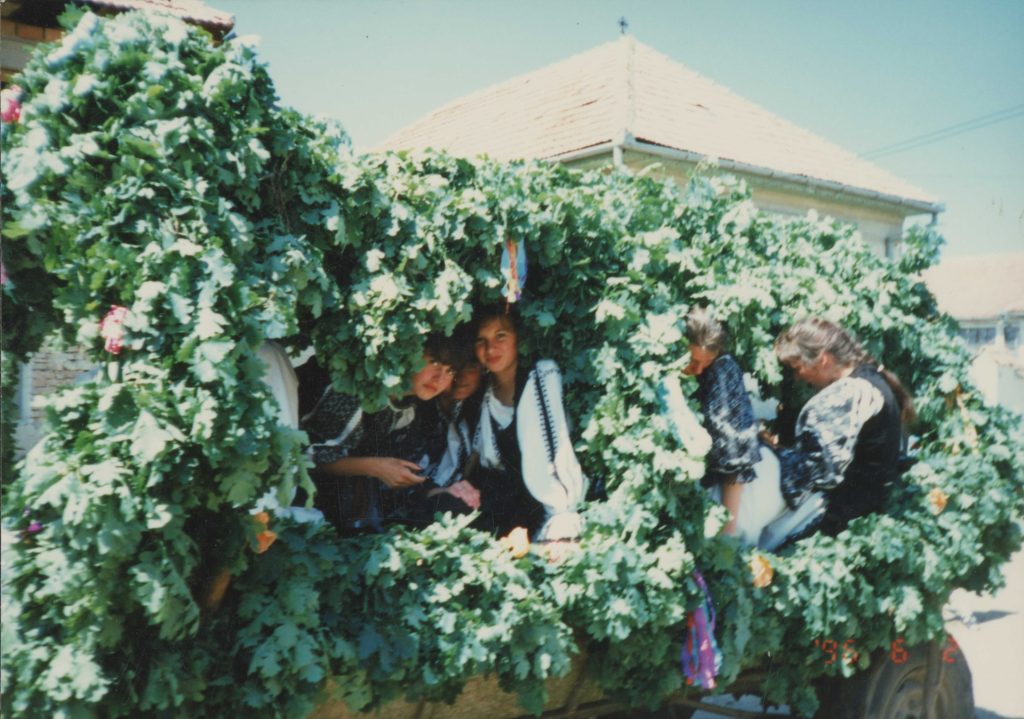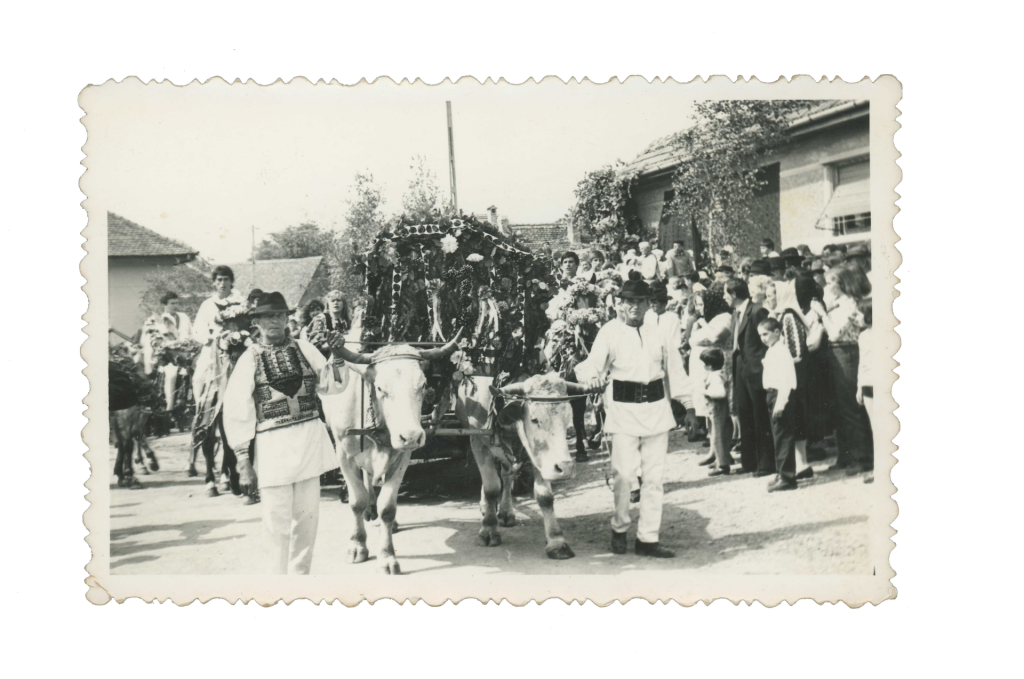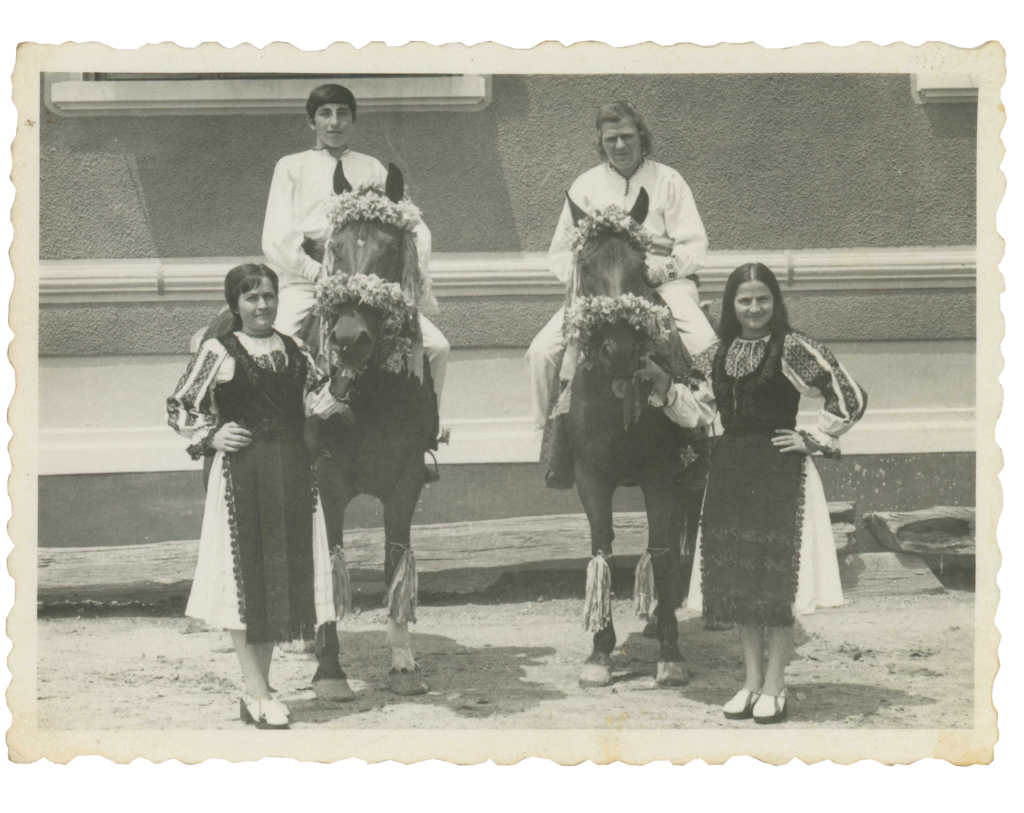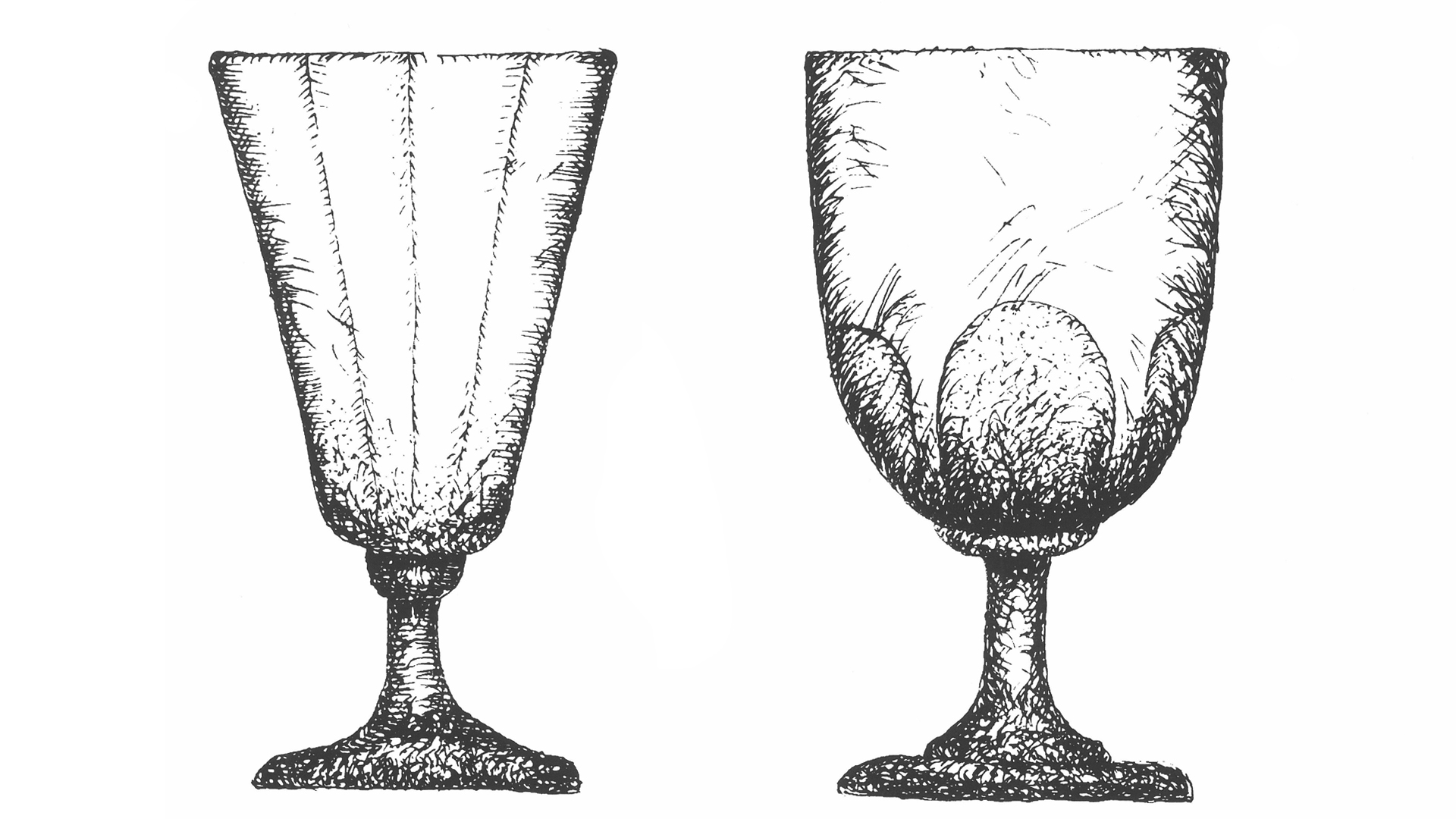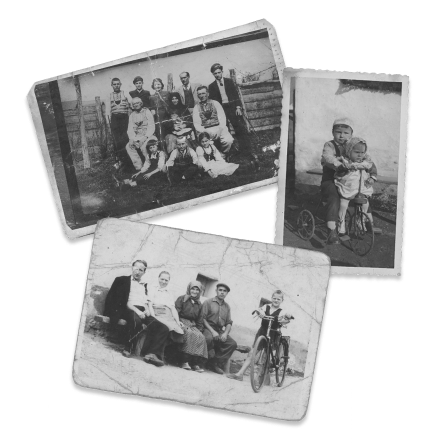And since we cannot love what we do not know, come with me, to Şona, which sits on the undulating edges of Olt, in the middle of winter, in a white, untravelled, human page, where the sounds roam more deeply. I brought you here to meet the huddle of lads, the children over generations of those ancient huddles that kicked and hated the land and the people, everywhere in the Land of Făgăraş. We are entering into the fullness of the ancient hibernal ritual, transmitted by word of mouth and from person to person and documented in the 17th century.
Carolling in the men's company is a tradition from ancient times, the fact that it is a ritual intended exclusively for men, having the function of preparing them for the role they will take on in traditional society, proves it in itself. It was present in the Christian peoples of Europe or in places colonized by Europeans. Today, the tradition is still preserved by a few nations, especially in the south-east and central Europe.
Morris Dance(England), Wren Boys (Ireland), Kalymniotikos chorus(Greece), Koliada (Ukraine), Survakari (Bulgaria), are just a few parallels of the male celestial in various cultures around the world, especially in rituals involving groups of men singing, dancing or performing ceremonies on the occasion of important seasonal or life cycle events.
Here they are in front of you, on the wall of the image archive, men whose costume and power "together" make them majestic and immortal before us. To the sky, the brimmed hat, worn at festivals, made of brightly coloured pebbles and peacock feathers, dressing the body - the peasant's white shirt of linen or hemp warmed with a quill or wide leather belt, the breastplate of sewn lambskin colourful and delicate, the thick woolen socks, the anklets, and finally, as a solid base of the whole outfit: the high leather boots, with simple cuts. When the frost is thick, the clothing receives a coat made of fleece or twilled cloth, a coat also made of wool, thick, up to below the knees.
Now you see them static, seated theatrically, but the fog is itself movement, movement through time and space, through dance and hierarchy. Listen to these still photographs to hear what happens before and after them. Look at them, close your eyes and listen to them. Return to the story only when you have heard something.
As a rule, young men who meet two conditions at the same time, not to be married yet and to be admitted to the choir, usually enter the huddle. That's why when we talk about caroling in a male group, we always think of the group of boys, of those who are about to settle down and get married, even if sometimes among the members of the group there are also ex-lads or even elderly people who enjoy caroling. The elderly watch over the passing on of traditions, songs and rituals to the young.
The gangs are founded a few weeks before Christmas, they establish their rehearsal place and choose a leader, the most respected among them, who will lead the caroling and watch over the good order of the custom. The name of this son differs depending on the region, senior bailiff, head, “maias” (leader), chamberlain, shepherd, journeyman and others. All citizens obey him, otherwise they can be punished or excluded from the group. In the huddle there are other precise functions that ensure the correct passage of knowledge; a junior bailiff replaces the big one if the situation demands it, the cook and the innkeeper take care, as their name suggests, of the food and drink of the huddle, the mare or the donkey carries the gifts received, the cashier collects the gifts in money, as the baker collects the cakes.
In group photos you will usually notice a decorated staff always held by the leader of the group, in the centre of the image, almost as a symbol of the axis of the world. The cooking of the staff differs depending on the region, but it is common to see tassels, ribbons, twigs or coloured paper in it. Look at the archive and you will see how it is decorated in these parts of the world.
The custom takes place on New Year’s Eve. In some villages of Tara Făgărașului carols start being sung on the eve of Saint Nicholas Day. In most areas, there are two times when bands fill the soundscape of the village, on Christmas Eve and New Year's Eve or on Saint Basil’s Day.
The old carols are being sung, which ones I couldn’t tell you, and because I don't want to make ‘’lutunoi’’, that is, in the language of the place, I don't want to make blunders/lumps (in the fabric of the weaving loom), I advise you to set off for these parts, see with your own eyes and tell me the story too. The carols, I was told, are sometimes accompanied by instruments such as a drum or whistle.
There are thousands, thousands and thousands of carols, and the researchers still have unplowed land before them, as rich as the soil of thought and speech passed down through a line of elders.
As anywhere, here the carollers are warmly welcomed by the community and given traditional Christmas gifts, such as cakes, cookies or other home-made delicacies, more recently, including money.
This tradition not only brings joy and celebration to the village, but also strengthens the bonds between community members and keeps the old culture and customs alive.
For those who have experienced the ritual, they know that a village in celebration is a vigorous and real thing that weaves in us living life and threads of harmony. For those who don't believe me, look at the photos of the huddle and of Pentecost, with the flowery carriages that cinematically cross the chain of houses of today's inhabitants of Şona, today and always, as we like to believe. Pentecost is another threshold of the festive year, 50 days after Easter, from the Descent of the Holy Spirit, a brother of caroling in a huddle. We see that the boys and girls of the village choose from the many flowers spread out on the fields and prepare an allegorical chariot drawn by oxen and horses and they are also decorated in the adornment of the field.
But it is not a show, dear archive viewer, it is experience, it is communion and it is connected to a shared and understood meaning. Which does not run for nothing. The huddles do not run for nothing. They circulate because something deep inside sets them in motion. Or so we like to believe. The celebration is not to be preserved, stored or showcased, it is to be used.
The carol bears witness to times when people strongly felt the connection with divinity. At the end of the year, they remember the good things, the profound meanings, recall the beginning and the end of the world and of humans, making the transition from chronological time to the timeless time of the celebration possible.
During the holiday you must know how to put yourself to use, to enjoy yourself, to do everything with your own hands, not with your neighbour's hands, so you can feel the spirit of the holiday and grow through it.
And so, human of the archives, this round and infinite year reminds us that we are always in the making, that every year is a repetition that brings with it something else, a new call to live more deeply and more authentically. An invitation to expand the love within us.
The word, the ring, the time - they are all ours and, through them, we allow ourselves to be closer to a living life that bears fruit and turns, uniting in its moment a past, a present and a future.
